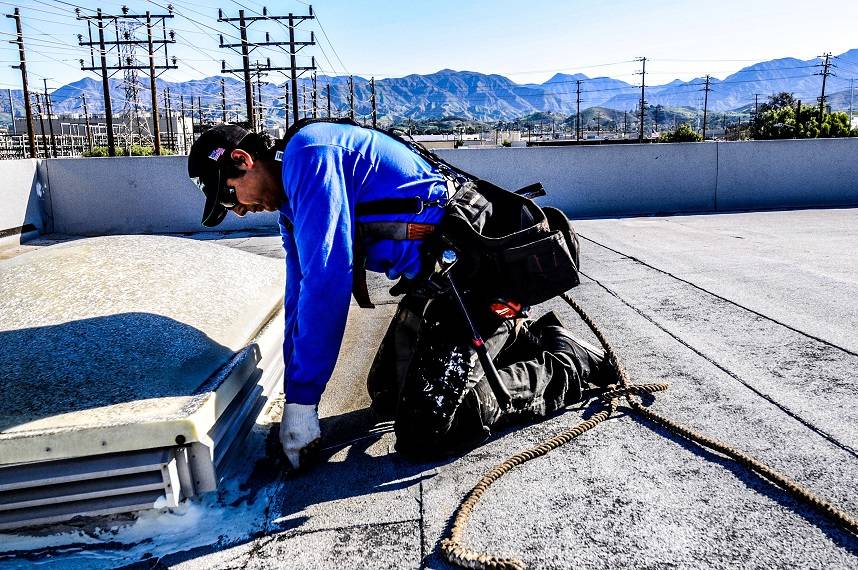First things first, while you should schedule a professional commercial roof inspection at least once a year, you can conduct a commercial roof inspection yourself, periodically.
In fact, in order to have a commercial roof that will last you many years periodic checkups are highly recommended, even if it’s done by yourself.
What you need to know is what to check, so for that, Central Roofing is here for you. So without further ado here’s what you need to check.
#1 Check For Debris.
The most common roof problem, especially for flat roofs, is debris clogging up water drains and preventing proper water drainage. So check for leaves, branches, trash, and other things that collect on the roof.
This should be easy to spot and easy to take care of.
#2 Check for Ponding Water.
Another enemy of flat roofs is ponding water. Ponding water often leads to deterioration and leaks in any commercial roofing system.
Even if the roof is dry, you should look for damp, dark, or stained areas, these are signs of ponding. Also, check for patches where mold and algae grow.
If you do see ponding and or signs of ponding then you might need to call a commercial roofer to for a roof inspection to address drainage issues and make repairs before leaks occur.
#3 Check the Roof Surface.
Walking carefully, observe for any punctures or tears in the roof membrane. Also, check for any separation at the seams.
Seams are a very common area where leaks occur. If you do see tears and separations, contact a commercial roofing company to schedule repairs.
After a professional commercial roof inspection, a roofing professional can repair the seams and punctures of the roofing system. Additionally, if you notice signs of leaks inside the building but can’t visibly see where the leak is coming from, than you should call a roofing professional as well.
A professional roofer can run tests to find where the leak is coming from and fix the leak.
#4 Check the Flashing and Edges.
Another common leak area is the flashing and edges. In case you’re wondering, the flashing is the metallic placed around the roof features such as skylights.
What you’re going to be looking for is signs of rust, separation, or loose flashing. If your roof has any of these things that could be a source of leaks.
Also, if possible take a look at the perimeter of the roof to make sure the edges are sealed down. If anything is amiss then they will need to be repaired.
 #5 Check Gutters, Drains, and Downspouts
#5 Check Gutters, Drains, and Downspouts
Lastly, you’ll need to check the gutter system. This goes along with #1 in checking for debris that could be clogging up the gutters. You can also run water tests on the gutters to make sure the water runs into the gutters and downspouts.
If the water is slow to drain you may have clogs that will need to be cleared out. Also, if you notice one or two leaks in the gutters you may be able to repair them yourself. Anything more than that, then you’ll need a professional.
[optin-monster slug=”vyo67u2a2yd7ynnjfktz” followrules=”true”]
Conclusion
Sometimes there are simple things we can do that go a long way. A simple periodic roof inspection of your commercial roof can save you money in the long run and ensure your roofing system will last for many years to come.
Of course, if you have any doubt call the professionals as most if not all commercial roofing companies offer free inspections.
[simple-author-box]



 #5 Check Gutters, Drains, and Downspouts
#5 Check Gutters, Drains, and Downspouts